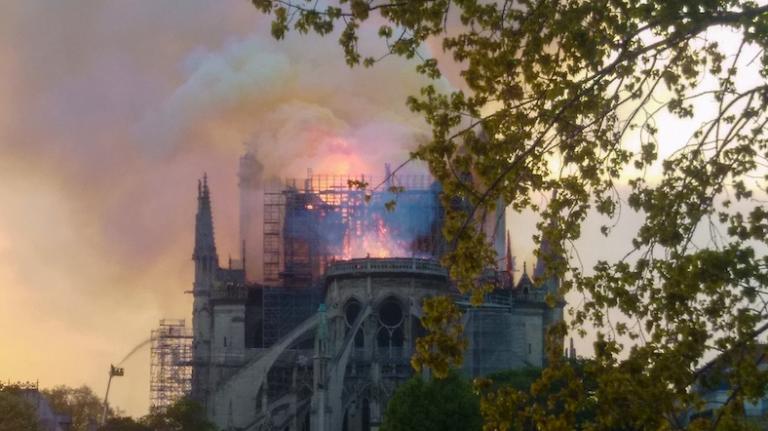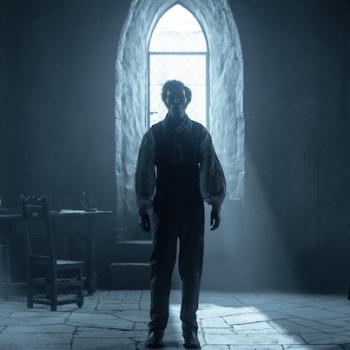
The fire in Notre Dame Cathedral in Paris is dying down now. No one knows how much was lost yet. I’ve read the cathedral’s famed rose windows were damaged. No word on many of the art and relics (including, reportedly, Jesus’ crown of thorns) inside. No word on the 8,000-pipe organ, made in the 1730s. But the spire—itself remade in the 19th century—toppled in a flaming mass of orange and black, in fire and ash.
Some called Notre Dame “the forest” for the 52 acres of timber used inside. The fire tore through the ancient structure like a scythe. You don’t have to be Christian to feel the loss. Notre Dame is a temple to history and art, too, and one of the most beautiful examples of Gothic architecture in the world.
But it was, and is, above all, a church—a place where centuries of Christians came to worship, and whose beauty and majesty must’ve felt like heaven on earth.
It was a horrifying day–made all the more horrifying, some say, by the fact that we’re in the midst of Holy Week now, when Notre Dame was preparing to unveil its treasure-trove of relics to the faithful.
But, perhaps, there’s a kernel of hope in the horror. After all, we Christians know what happened during Holy Week, more than a thousand years before Notre Dame’s first stone was laid. We know that new hope can hide under a blanket of ash.
And it’s not as if Notre Dame has stood serene all these years.
Builders laid its cornerstone in 1163. Nearly two centuries later, is was finally finished. But by 1548, rioting Huguenots were damaging statues and destroying icons. During the French Revolution, the church was re-dedicated to the Cult of Reason, and statues of the Virgin Mary were replaced by those of the Goddess of Liberty. While Napoleon Bonaparte used the cathedral as the site of his coronation in 1802, the Emperor famously snatched the crown from the Pope’s hands and crowned himself. A couple decades later, the interior was almost in ruins—rescued from further decay by Victor Hugo’s wildly popular The Hunchback of Notre Dame.
In some respects, the rocky history of Notre Dame reflects the history of the Christian Church itself—prone to attacks and assaults outside its walls, decay and indifference within. We sometimes reject the submission that the Christian life demands and set up our own idols. Instead of turning our eyes to Christ, we crown ourselves king.
And yet, somehow, the faith is still with us, sometimes growing stronger after each stumble.
I like what G.K. Chesterton said in The Everlasting Man:
“Christendom has had a series of revolutions and in each one of them Christianity has died. Christianity has died many times and risen again; for it had a God who knew the way out of the grave.”
Worshippers gathered around Notre Dame as the fire raged—kneeling, praying, singing. For two hours they sang, and more.
Officials say that Notre Dame’s iconic bell towers have been saved. French President Emmanuel Macron says the cathedral will be rebuilt. “It is at the very heart of our lives,” he said.
In the Bible, ash is a symbol of destruction and death, grief and desolation. On Ash Wednesday, it reminds us that “you are dust, and to dust you shall return.” Many a biblical character donned sackcloth and sat in ashes in the midst of grief and anguish. Job, when at his lowest point, took a piece of “broken pottery and scraped himself with it as he sat among the ashes.” (Job 2:8, NIV)
But Job rose from those ashes eventually. For just as they symbolize death, they’re about rebirth, too. Repentance and new beginnings. It’s what I think the Easter season’s all about: Finding new life in the midst of death, new hope in the midst of destruction. And Notre Dame, like the mighty Savior she’s consecrated to, will herself rise again.













